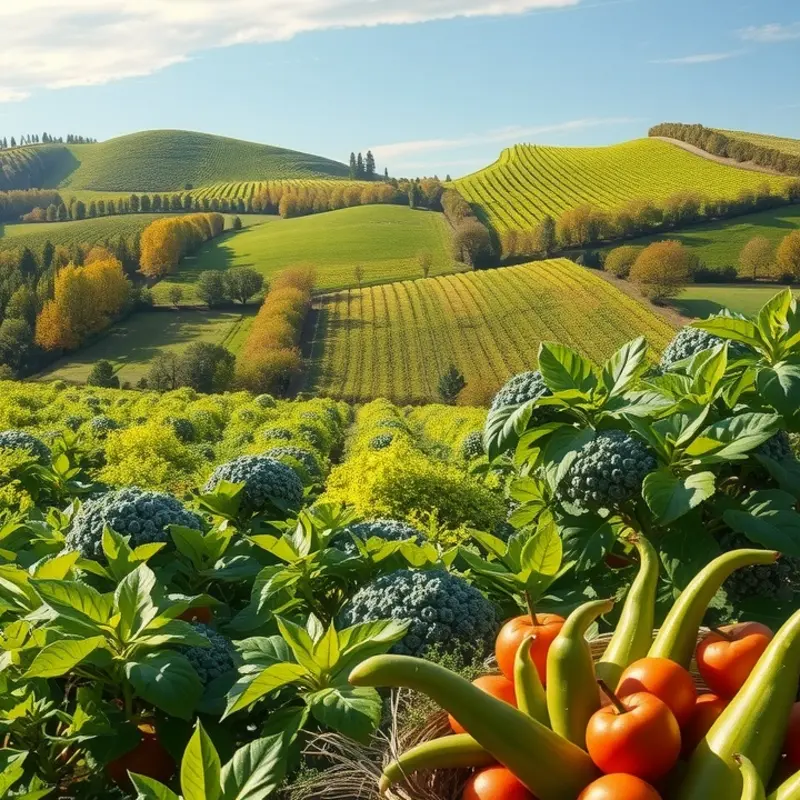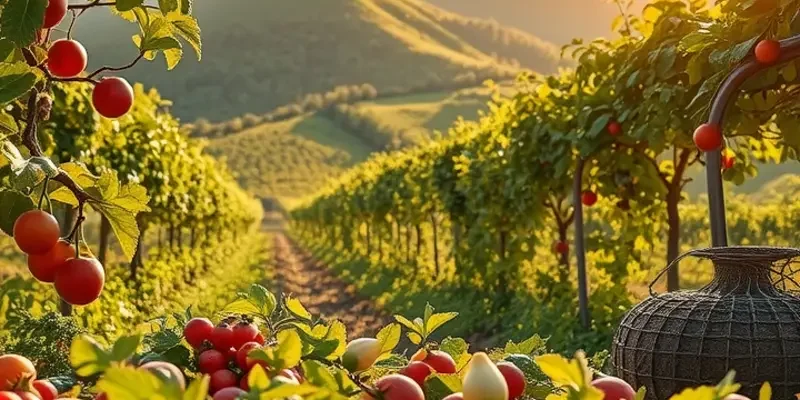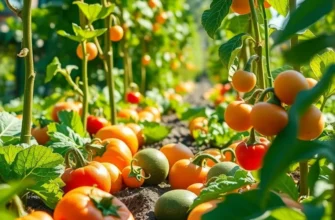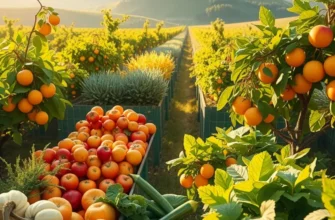Seasonality in food is more than just a trend; it’s a celebration of nature’s bounty. As we journey into diverse culinary landscapes, we will uncover how seasonal cycles influence flavors, ingredients, and culinary traditions globally. From vibrant festivals celebrating the harvest to the cultural significance of seasonal dishes, let’s explore how these elements shape our relationship with food.
The Global Harvest: How Seasons Shape Cuisine

Across the globe, the changing of seasons brings not only shifts in weather but also transformative impacts on culinary traditions. Each season offers a remarkable bounty of fresh produce, encouraging diverse cultures to embrace unique flavors that define their local dishes. Spring, for instance, is a celebration of rebirth and freshness. In Italy, the arrival of spring means markets are filled with the sight of tender asparagus, a beloved ingredient due to its flavor and versatility. Italians pair asparagus with pasta or risotto, creating dishes that are both simple and sophisticated.
Summer brings a different spectrum of flavors, with Mediterranean countries reveling in the abundance of sun-ripened tomatoes, fragrant basil, and zucchini. These ingredients become the cornerstone of dishes such as ratatouille in France or caponata in Sicily, where fresh produce is allowed to shine. As the season peaks, festivals centered around the harvest serve as a communal celebration, a reminder of the connection between people and their land.
Autumn introduces a palette rich in deep hues and robust flavors. In the Americas, the humble pumpkin takes center stage, inspiring everything from hearty soups to sweet pies. The celebration of pumpkins is not just about the edible value but also encompasses cultural festivities like the famous Pumpkin Festivals in the United States, symbolizing gratitude and abundance.
Winter’s chill might imply a scarcity in fresh produce; however, cultures adapt by turning to preserved ingredients. In Nordic countries, food preservation methods create a wealth of flavors that sustain through the cold months. Fermentation and curing turn ordinary vegetables into deeply flavored staples which have sustained communities for generations.
The significance of seasonal cooking extends beyond mere ingredient availability—it’s deeply embedded in rituals and holidays. From the Lantern Festival in China marking the end of winter with tangyuan, sweet glutinous rice balls, to Diwali’s vast array of sweets in India, these celebrations reflect both resourcefulness and reverence for the seasons.
In integrating seasonal ingredients, cultures have developed diets that naturally align with nutritional needs. Seasonal foods are often richer in nutrients when freshly harvested. Embracing this rhythm is an insightful step towards mindful eating, which is explored in more detail in discussions about addressing unconscious eating.
Ultimately, seasonal cuisine is a testament to human ingenuity and adaptability. It is a culinary narrative where history, culture, and flavor converge, each dish telling a story of the time and place from which it comes.
Culinary Traditions: Rituals and Celebrations of the Seasons

In numerous cultures, the changing of the seasons heralds a time for culinary traditions that embody the passage of time. These rituals, deeply entrenched in the fabric of societies, are not merely about sustenance but stories of heritage, community, and celebration.
In Japan, the arrival of spring is marked with the tradition of Hanami. Families and friends gather under the cherry blossoms for picnics, celebrating the transient beauty of the blooms. The bento boxes prepared for these gatherings often feature dishes that embrace the fresh, delicate flavors of the season, like sakura mochi—a sweet rice cake wrapped in a cherry blossom leaf. This ritual not only celebrates nature’s renewal but also strengthens social bonds as people come together to share meals and marvel at the fleeting beauty of cherry blossoms.
Moving to the Mediterranean, the late summer and early autumn months bring the grape and olive harvests. In Greece and Italy, festivals such as the Festa dell’Uva celebrate the grape harvest with parades and communal gatherings. During these times, families work together to harvest, stomp, and press grapes, transforming them into wine. These practices echo traditions that date back millennia, highlighting the symbiotic relationship between humans and their environment. The culinary expressions that arise from these festivals, like fresh grape must cakes or marinated olives, are reminders of the land’s generosity and the community’s collaborative spirit.
In India, the festival of Makar Sankranti marks the transition of the sun into Capricorn, signaling the end of winter and the beginning of longer days. Across the country, this is celebrated with different rituals, but a common thread is the use of sesame and jaggery in various sweets. These ingredients are believed to imbue warmth and vitality, fitting for a festival that welcomes the sun’s increased presence. The preparation and sharing of these sweets are acts of kinship, fostering unity and joy.
In North America, Thanksgiving is perhaps one of the most well-known seasonal celebrations, centered around harvest bounty. Families and friends gather to share a meal featuring turkey, cranberry sauce, and pumpkin pie. Each dish carries its own set of meanings, rooted in both indigenous traditions and colonial history. The act of breaking bread together serves as a powerful reminder of gratitude and the importance of community.
These seasonal celebrations are not just about the food on the table but about connection—to each other and to the land. They serve as anchors in time, grounding us in tradition while inviting us to celebrate the rhythms of nature. Chefs and families alike find endless inspiration in these rituals, creating dishes that not only taste of the season but also tell stories of cultural identity and environmental awareness.
For those exploring global flavors, understanding these practices enriches the culinary experience, offering a more profound appreciation for the diversity of food cultures. Engaging with these traditions can lead to mindful eating practices that emphasize seasonality and sustainability. Learn how to incorporate seasonal influences into your kitchen.
Final words
The culinary world is a tapestry woven with the threads of seasonal cycles and cultural traditions. Each season invites us to explore a unique palette of flavors, textures, and culinary practices. By embracing this natural rhythm, we not only honor the environment but also the rich cultural histories that accompany our meals. As food enthusiasts, embracing seasonal ingredients can lead to healthier and more sustainable eating practices while connecting us deeply with the diverse culinary traditions that span the globe. Let’s celebrate the beauty of food that reflects the seasons and the communities that cherish it.








